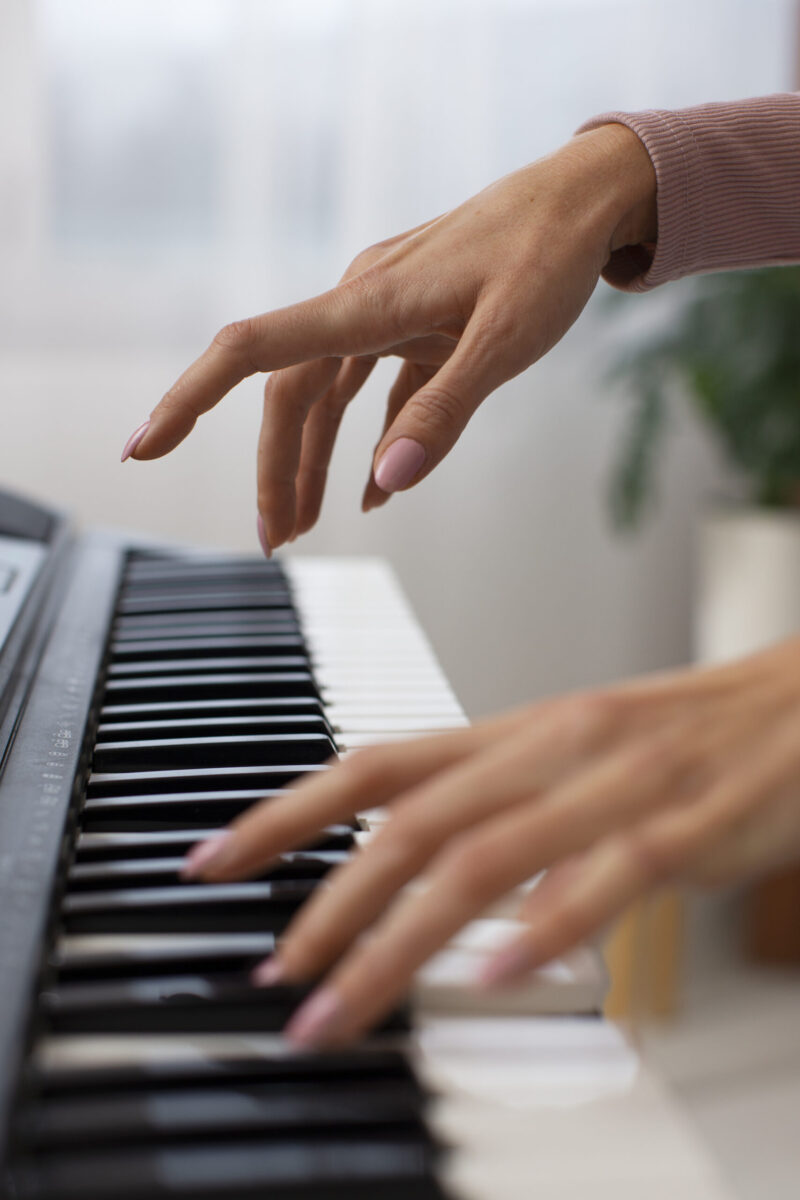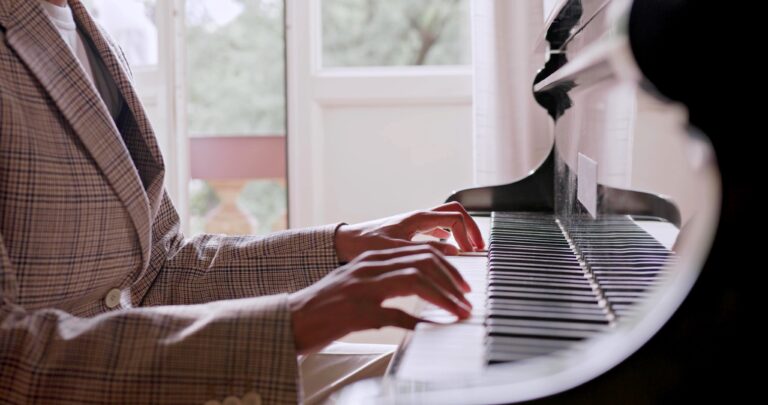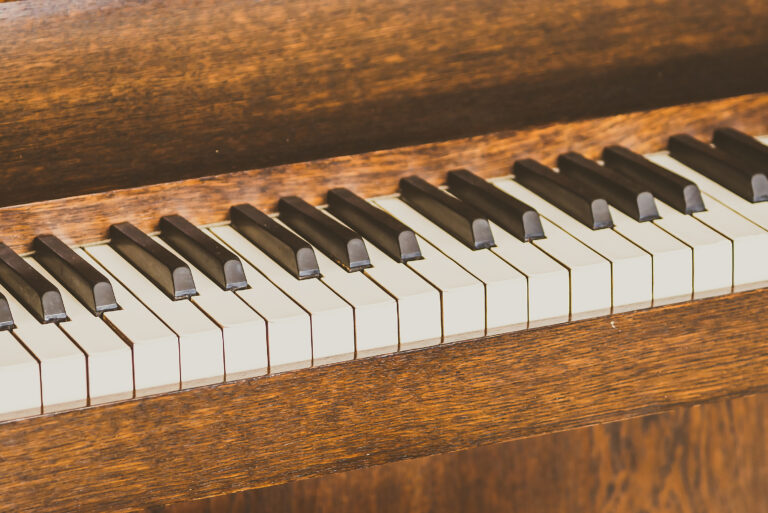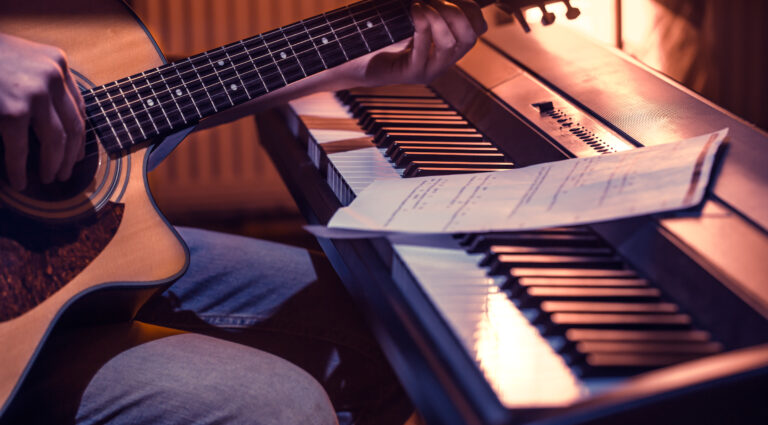The Long Nail Dilemma: Pros and Cons of Piano Playing with Extended Fingertips
Step into the enchanting world of musical mastery, where the delicate balance between aesthetics and artistry unfolds like a captivating sonata. The age-old conundrum of playing the piano with long fingernails beckons, a riddle that weaves a tapestry of adaptation and ingenuity.
Picture this: the soft glow of the piano keys, the gentle caress of the ivories, and the allure of long, graceful nails. Can these elements coexist harmoniously, or do they stand as adversaries in the realm of musical expression? The answer, like a hidden melody waiting to be unravelled, lies within the intricate interplay of technique and determination.

Imagine the exquisite challenge of navigating the piano keys with the elegance of long nails, a dance of finesse and resilience. As your fingers glide across the keys, the siren call of aesthetic allure meets the formidable demands of musical precision. Yet, fear not, for within this enigmatic labyrinth lies the promise of adaptation and innovation.
Embrace the possibility of reimagining your playing technique, a symphony of transformation that transcends the limitations of convention. Perhaps it is the gentle caress of your fingertips that shall grace the keys or the subtle adjustment of angles that shall guide your melodies. As the keys yield to your touch, a new realm of musical expression unfolds, a testament to the resilience of the human spirit and the boundless creativity of the soul.
Yet, amidst this wondrous odyssey, the length of your nails stands as a silent arbiter, a delicate balance that tips the scales of possibility. Should they venture too far, they beckon the necessity of trimming and filing, a harmonious compromise between aesthetics and practicality.
So, dear reader, as we embark on this journey of adaptation and discovery, let us unravel the enigma of playing the piano with long nails. Let us explore the depths of ingenuity and resilience, and unearth the melody of transformation that awaits those who dare to tread this path.
Challenges of Playing Piano with Long Nails
Altered Technique
Playing the piano with long nails can be a challenging task. One of the main challenges is that it alters the technique required to play the instrument. When playing with long nails, it becomes difficult to maintain proper hand position and finger placement. This can result in inaccurate playing, which can be frustrating for both the player and the listener.
In addition, long nails can make it difficult to play certain chords and notes, especially those that require a lot of pressure or precision. This can limit the range of music that you can play and hinder your progress as a pianist.
Risk of Injury
Another challenge of playing the piano with long nails is the risk of injury. Long nails can get caught in between the keys, causing pain and discomfort. This can also cause damage to the keys and the piano itself.
Furthermore, playing with long nails can put excessive pressure on the fingertips, which can lead to soreness and even injury. This can be especially problematic for those who play for extended periods of time or who have a rigorous practice schedule.
To avoid these challenges and risks, it is recommended to keep your nails short and well-trimmed when playing the piano. This will allow for proper technique and reduce the risk of injury.
Adapting Piano Techniques for Long Nails
Fingertip Positioning
When playing the piano with long nails, it is important to adjust your fingertip positioning. You should aim to play with the pads of your fingers, rather than the tips. This will enable you to press down the keys with more accuracy and control and avoid hitting adjacent keys accidentally.
To achieve this, try to keep your fingers curved and relaxed, and avoid flattening them out. You may also need to adjust the angle of your fingers slightly so that they strike the keys at a perpendicular angle. This may take some practice, but with time, you should be able to find a comfortable and effective position.
Nail Strength and Maintenance
To play the piano with long nails, you need to ensure that your nails are strong and well-maintained. Weak or brittle nails can easily break or split, which can be frustrating and painful. To strengthen your nails, you can try using a nail hardener or supplementing your diet with biotin or other vitamins that promote nail health.
In addition to strengthening your nails, you should also keep them well-maintained. This means filing them regularly to keep them smooth and even, and avoiding harsh chemicals or excessive moisture that can weaken them. You may also want to consider using a protective coating or polish to help prevent chipping or breaking.
By adapting your fingertip positioning and taking good care of your nails, you can successfully play the piano with long nails. With practice and patience, you can develop the necessary skills and techniques to play your favourite pieces with confidence and precision.
Piano Genres and Long Nails
Classical Considerations
If you are a classical pianist, then having long nails can be a hindrance to your playing. In classical music, the technique of playing the piano involves using the fingertips to hit the keys with precision and control. Long nails can get in the way and prevent you from achieving the right touch and sound.
Moreover, playing with long nails can cause discomfort and even pain, especially when playing for extended periods. The piano requires a lot of finger dexterity, and having long nails can make it difficult to play fast and complex pieces.
Popular Music Adaptability
On the other hand, if you are a pianist who plays popular music, then having long nails may not be as much of an issue. Popular music genres, such as jazz, pop, and rock, have a more relaxed approach to piano playing, and the technique is not as strict as in classical music.
In these genres, you can use your nails to create a unique sound and style. Long nails can be used to strum the piano strings, creating a percussive effect that is popular in rock and pop music. However, it is important to note that even in these genres, having excessively long nails can still cause discomfort and make it difficult to play certain pieces.
The feasibility of playing the piano with long nails varies depending on the music genre. Classical pianists may encounter challenges, whereas those in popular music genres may find it more accommodating. The decision to maintain long nails ultimately rests with the individual, but it’s crucial to weigh the potential impact on playing ability.
Alternative Instruments for Long-Nailed Pianists

If you have long fingernails and find it difficult to play the piano, don’t worry. There are other instruments that you can play without any issues. In this section, we will discuss some alternative instruments that long-nailed pianists can consider.
Keyboard and Synthesizers
If you are looking for an instrument that is similar to the piano, you can try playing a keyboard or a synthesizer. These instruments have a similar layout to the piano, and you can play them with your fingertips instead of your nails. Additionally, keyboards and synthesizers often come with features that allow you to customize the sound to your liking.
Other Instrument Options
If you are open to trying new instruments, there are many options available. Here are a few suggestions:
- Guitar: The guitar is a versatile instrument that can be played with your fingertips or a pick. It is a great option for those who enjoy playing chords and melodies.
- Ukulele: The ukulele is a small, four-stringed instrument that is easy to learn and play. It is a great option for those who enjoy playing simple melodies and strumming chords.
- Drums: If you are looking for an instrument that is completely different from the piano, you can try playing the drums. Drums are played with your hands or with drumsticks, so you don’t have to worry about your nails getting in the way.
If long fingernails pose a challenge for piano playing, there are numerous alternative instruments to explore. Whether it’s a keyboard, guitar, ukulele, or drums, there’s a diverse array of instruments waiting to cater to your musical inclinations.
Famous Pianists with Long Nails

If you’re wondering whether you can play the piano with long nails, the answer is yes, you can. Some famous pianists have played with long nails, and their performances are still celebrated today.
Here are a few examples of famous pianists who played with long nails:
Franz Liszt
Franz Liszt was a 19th-century Hungarian composer and pianist who was known for his virtuosic playing style. He was also known for his long nails, which he used to create a unique sound on the piano. Liszt’s long nails allowed him to create a more delicate and nuanced sound, and he often used them to play complex passages with precision and clarity.
Vladimir Horowitz
Vladimir Horowitz was a Russian-American pianist who was known for his technical skills and dynamic performances. Horowitz also had long nails, which he used to create a more expressive and powerful sound on the piano. He often used his nails to create a more percussive sound, and he was able to play complex pieces with ease and precision.
Martha Argerich
Martha Argerich is an Argentine pianist who is known for her virtuosic playing style and expressive performances. Argerich also has long nails, which she uses to create a more delicate and nuanced sound on the piano. She can play complex pieces with ease and precision, and her performances are celebrated for their emotional depth and technical skill.
Playing the piano with long nails is not only possible but has been successfully executed by renowned pianists. Although it may require some adjustment, long nails can be harnessed to produce a distinctive sound on the piano and elevate a pianist’s playing style.






